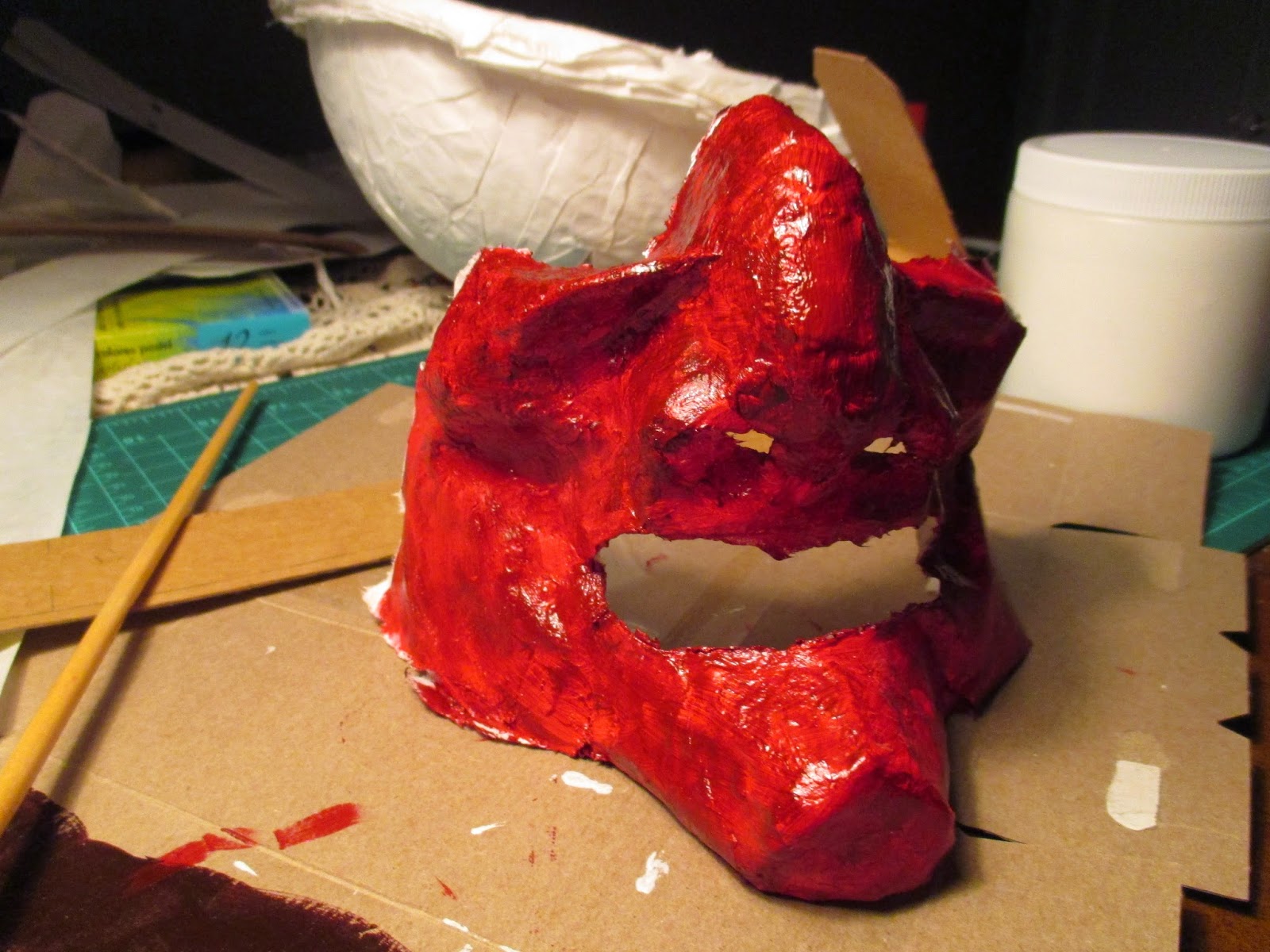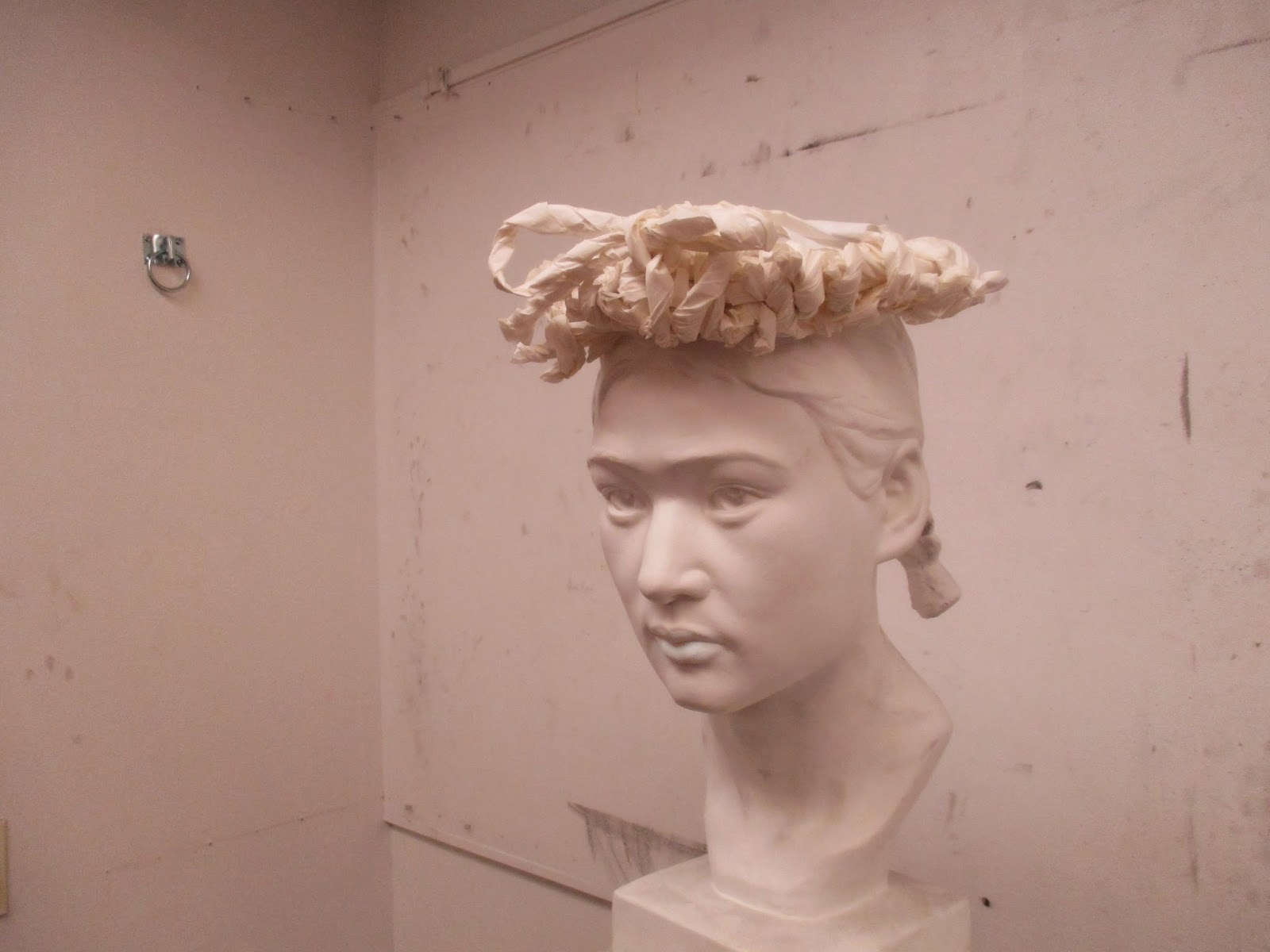Paper Sculpture Themed Object
I have chosen Japanese styled hats as my theme for the three themed paper sculptures.
In this picture I am practicing with gesso to see how well it holds a form.
Here I am experimenting with glue and gesso to see which one holds the paper down well and is less visible.
This was to see how long crumpled paper that was twisted would hold its form after being dunked in water.
These two pieces were utilizing solely water to try and get the paper to become a solid shape.
After my experiments I decided to make a paper mache mask as part of one of my pieces.
I first took clay and put it over a skull from one of the anatomical dummies. I then exaggerated some of the features such as the cheek bones, chin, and nose to make it look more like the mempo (face mask) I had seen in my research.
These next few pictures show the face mask after I peeled the clay off of it and applied two coatings of gesso on the front and back to give it a stiffer form. The paper mache itself is three layers thick but I would recommend using even more layers as the mask was a little flimsy.
In the next two photos I have applied red acrylic paint to make the mask stand out more and to make it a little stiffer.
These two photos show the kabuto or samurai helmet which goes along with the mempo. I layered at least eight piece of wet paper over a bowl and let it dry to create its form. I then tied them together and applied a few coats of gesso to make it stiffer.
Here I cut out a visor and painted it black. I then cut out strips of thick paper and laced them together with thin, twisted paper and attached it to the rest of the piece to form the neck guard.
Next I added some thin, twisted paper to the mempo so it could be tied to the face and then I coated the rest of the helmet in red acrylic paint to match the mempo.
My second piece resembles a rice paddy hat. I took large strips of paper and layered them over one another. I then traced the circumference of a trash can lid and cut out the circles. I took these circles, drenched them in water and then smoothed them into the trash can lid to achieved this concave form.
To get the pattern you see I first cut slits into one of the circles I had previously cut out and then wove long strips of paper into them to get a woven grass effect.
I then supported the interior to keep its shape with a system of stiff paper to create a type of network to keep the paper from flopping around too much. Finally, I tied some twisted paper to this structure and painted them gold to use a the chin strap.
My third themed object is modeled after a headband I saw that was woven from straw. I made mine by taking long strips of paper, twisting them, and then weaving them together to get this shape. I then dunked it in water and let it dry in hopes that it would shrink slightly and hold together more tightly.
These two pictures show the completed head band on a model head. The head was a little big for the head band but I did not want to damage my piece by forcing it onto the sculpture.
Here is the completed kabuto and mempo displayed on the stature head.
These final pictures show the completed rice paddy hat and its substructure to keep its form.





































